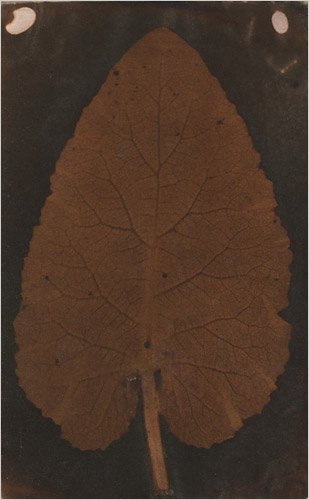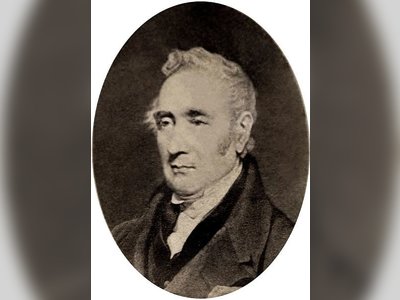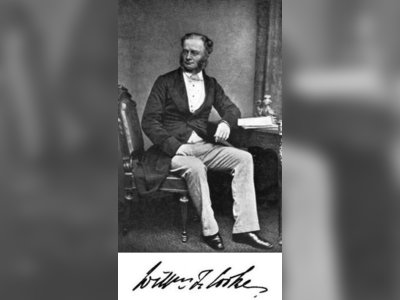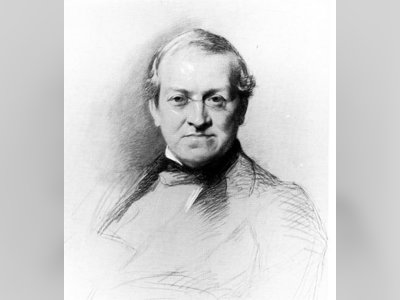British Heritage
Remember, Cherish, Learn.
beta
Thomas Wedgwood - Photography
The Unseen Luminary of British Heritage.
Undeniably, Thomas Wedgwood’s invaluable contributions to the development of photography shape a unique narrative in the annals of British heritage. While the French herald their compatriot Louis Daguerre as the originator of photography, the British can stake a claim for earlier pioneering work. This profound legacy is attributed to Thomas Wedgwood, who initiated the creation of photograms with silver nitrate on leather, pre-dating Daguerre’s efforts by three decades.
Born on May 14, 1771, Thomas Wedgwood was the fifth of eight children of the famous potter, Josiah Wedgwood, and his wife Sarah. Growing up in the budding industrial city of Etruria, Staffordshire, young Wedgwood inherited a passion for art and culture from his family's innovative environment.
Despite enduring ill health throughout his life, Wedgwood was profoundly interested in education and the human learning process. In particular, he hypothesized that much of the information absorbed by young brains occurred through visual stimuli, which ignited his fascination with light and images.
Never marrying or having children, Wedgwood dedicated his life to his explorations, the fruits of which revolutionized how we perceive the world. His legacy has even led some historians to honor him as the "first photographer."
Wedgwood’s contributions to photography arose from his attempts to record camera images on light-sensitive material. Although his initial attempts yielded only shadow images (photograms) that weren't light-fast, his ideas and attempts formed the conceptual breakthrough that heralded the advent of photography.
Wedgwood used silver nitrate, coating paper and white leather with it to make them sensitive to light. Despite the failure of his efforts to capture real-world scenes using a camera obscura, he succeeded in capturing silhouette images of objects and the shadow images cast by sunlight through paintings on glass.
Wedgwood's work was recognized and publicized by the esteemed chemist, Humphry Davy, who he met during his stay at the Pneumatic Clinic in Bristol. In 1802, Davy penned a detailed account of Wedgwood's work for publication in London's Journal of the Royal Institution. The paper, titled "An Account of a Method of Copying Paintings upon Glass, and of Making Profiles, by the Agency of Light upon Nitrate of Silver," elucidated Wedgwood's processes and achievements and Davy's modifications of them.
Although the Journal was not as influential as it is today, and the paper's circulation was limited, the ideas documented were a beacon for future chemists and scientists exploring the craft of photography.
Wedgwood's work significantly influenced the works of J. B. Reade in 1839, who experimented with tanning agents on paper for faster sensitization. These results informed Henry Fox Talbot's research, thereby enriching the field of photography.
Wedgwood's principal shortcoming was his inability to make his images light-fast or "fix" them. Consequently, the photographs had to be stored in total darkness to preserve the image, or they would darken entirely over time. However, his work influenced later photographers like Henry Fox Talbot and Louis Daguerre, who discovered methods to stabilize their images chemically.
Despite Wedgwood's inability to fix his pictures, rumors of surviving photographs sparked widespread interest. In 2008, a photogram depicting the silhouette of a leaf was discovered, marked with a "W," and was proposed to be one of Wedgwood's works from the 1790s. The authenticity of this artifact remains contested, and further analysis is ongoing, highlighting the enduring intrigue surrounding Wedgwood's pioneering work.
Wedgwood's contribution extends beyond the realm of photography. As a patron of the arts, he sponsored notable figures like the poet Samuel Taylor Coleridge, allowing him the freedom to focus on philosophy and poetry. Wedgwood's personal friendship with Coleridge even prompted the poet's attempt to procure cannabis to help Wedgwood alleviate his chronic stomach aches.
Thomas Wedgwood passed away on July 10, 1805, in Dorset at a young age of 34, leaving behind a legacy steeped in innovation and experimentation. Although his life was marked by chronic health issues, his enduring spirit continues to inspire scholars, artists, and scientists. His pioneering work, which laid the foundation for modern photography, secures him an esteemed place in British heritage and the annals of global innovation.
Despite being unable to fix his images permanently, his novel use of light-sensitive chemicals to capture images and his tireless experiments mark him as one of the founding fathers of photography. From his birthplace in Etruria, Staffordshire, to his final days in Dorset, Wedgwood's life and contributions paint a vivid picture of a visionary who forever imprinted his image on the photographic landscape.
Early Life and Inspiration
Born on May 14, 1771, Thomas Wedgwood was the fifth of eight children of the famous potter, Josiah Wedgwood, and his wife Sarah. Growing up in the budding industrial city of Etruria, Staffordshire, young Wedgwood inherited a passion for art and culture from his family's innovative environment.
Despite enduring ill health throughout his life, Wedgwood was profoundly interested in education and the human learning process. In particular, he hypothesized that much of the information absorbed by young brains occurred through visual stimuli, which ignited his fascination with light and images.
Never marrying or having children, Wedgwood dedicated his life to his explorations, the fruits of which revolutionized how we perceive the world. His legacy has even led some historians to honor him as the "first photographer."
Pioneering Work in Photography
Wedgwood’s contributions to photography arose from his attempts to record camera images on light-sensitive material. Although his initial attempts yielded only shadow images (photograms) that weren't light-fast, his ideas and attempts formed the conceptual breakthrough that heralded the advent of photography.
Wedgwood used silver nitrate, coating paper and white leather with it to make them sensitive to light. Despite the failure of his efforts to capture real-world scenes using a camera obscura, he succeeded in capturing silhouette images of objects and the shadow images cast by sunlight through paintings on glass.
Groundbreaking Experiments and Recognition
Wedgwood's work was recognized and publicized by the esteemed chemist, Humphry Davy, who he met during his stay at the Pneumatic Clinic in Bristol. In 1802, Davy penned a detailed account of Wedgwood's work for publication in London's Journal of the Royal Institution. The paper, titled "An Account of a Method of Copying Paintings upon Glass, and of Making Profiles, by the Agency of Light upon Nitrate of Silver," elucidated Wedgwood's processes and achievements and Davy's modifications of them.
Although the Journal was not as influential as it is today, and the paper's circulation was limited, the ideas documented were a beacon for future chemists and scientists exploring the craft of photography.
The Wedgwood Effect on Future Photography
Wedgwood's work significantly influenced the works of J. B. Reade in 1839, who experimented with tanning agents on paper for faster sensitization. These results informed Henry Fox Talbot's research, thereby enriching the field of photography.
Wedgwood's principal shortcoming was his inability to make his images light-fast or "fix" them. Consequently, the photographs had to be stored in total darkness to preserve the image, or they would darken entirely over time. However, his work influenced later photographers like Henry Fox Talbot and Louis Daguerre, who discovered methods to stabilize their images chemically.
The Controversy of the Surviving Photographs
Despite Wedgwood's inability to fix his pictures, rumors of surviving photographs sparked widespread interest. In 2008, a photogram depicting the silhouette of a leaf was discovered, marked with a "W," and was proposed to be one of Wedgwood's works from the 1790s. The authenticity of this artifact remains contested, and further analysis is ongoing, highlighting the enduring intrigue surrounding Wedgwood's pioneering work.
The Unseen Patron of the Arts
Wedgwood's contribution extends beyond the realm of photography. As a patron of the arts, he sponsored notable figures like the poet Samuel Taylor Coleridge, allowing him the freedom to focus on philosophy and poetry. Wedgwood's personal friendship with Coleridge even prompted the poet's attempt to procure cannabis to help Wedgwood alleviate his chronic stomach aches.
Conclusion
Thomas Wedgwood passed away on July 10, 1805, in Dorset at a young age of 34, leaving behind a legacy steeped in innovation and experimentation. Although his life was marked by chronic health issues, his enduring spirit continues to inspire scholars, artists, and scientists. His pioneering work, which laid the foundation for modern photography, secures him an esteemed place in British heritage and the annals of global innovation.
Despite being unable to fix his images permanently, his novel use of light-sensitive chemicals to capture images and his tireless experiments mark him as one of the founding fathers of photography. From his birthplace in Etruria, Staffordshire, to his final days in Dorset, Wedgwood's life and contributions paint a vivid picture of a visionary who forever imprinted his image on the photographic landscape.
- Thomas Wedgwood (photographer)en.wikipedia.org






